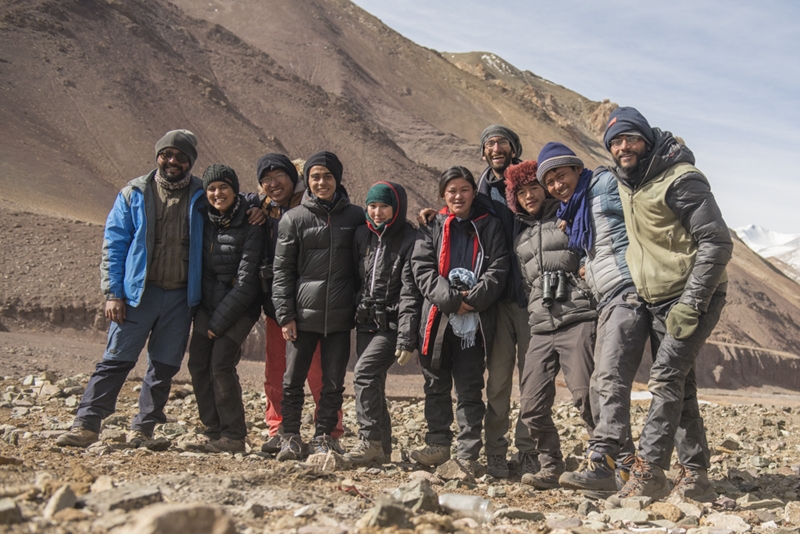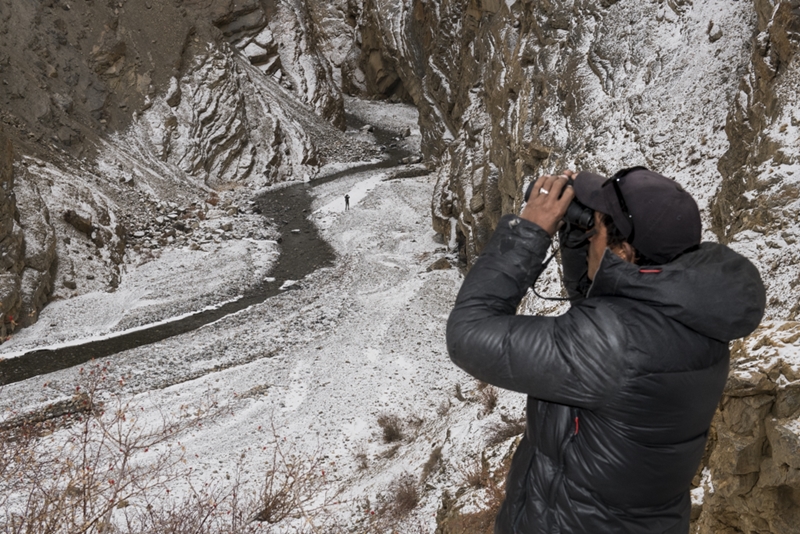Project: to fund camera traps to study the effects of climate change on snow leopards
2022 Project Partner: Nature Conservation Foundation (NCF)
Nature Conservation Foundation works in India’s high altitudes, striving to help conserve the snow leopard and the diversity of life and landscapes that this cat symbolises, in a scientifically robust and socially responsible manner. Their efforts combine research, community involvement, conservation education, and policy-level dimensions.
Find out more about Nature Conservation Foundation. Set up a Fundraising Page.
About Nature Conservation Foundation (NCF)
Nature Conservation Foundation is a non-profit organisation based in India working to conserve the snow leopard and its habitat. Established in the late 1990s, NCF aims to further peaceful human-wildlife coexistence which has been the norm in the high altitude regions of India. Through thorough research and community-led programmes, NCF works towards building a reliable and credible knowledge pool and increasing community participation in snow leopard conservation.
Snow Leopards
Snow leopards occur in the high mountains of Central and South Asia covering an area of 2mn square kilometres, spread across twelve countries.
The snow leopard usually lives solitary in the wild for 10-12 years. While its diet varies across mountain ranges, it usually preys on mountain ibex, blue sheep and argali sheep.
The only exception to their solitary living is when the female snow leopard raises cubs. Mating season coincides with late winter and after a gestation period of 90-100 days, 1-5 cubs are born. Until the cubs become independent, which usually happens post 18-22 months, the cubs stay with the mother.
Research Area – Himachal Pradesh, Western Himalaya
Himachal Pradesh is a spectacular state in Northern India which spreads across an area of more than 55,000 sq kms and offers great diversity. Within the state, altitude ranges from around 400m above sea level to 7,000m. Perennial glacier-fed or rainfall-fed rivers and their tributaries, including Beas, Chenab, Ravi and Satluj feed the fertile slopes and forested valleys. Shimla in the south, is the state’s largest city, and the capital of Himachal Pradesh.
Over half of Himachal Pradesh falls under the high altitude region of the Great and Trans-Himalayan tract. Directly north you’ll find the union territory of Ladakh, while to the east lies Tibet. Due to its high altitude arid environment, this region is sparsely populated with agro-pastoralism the predominant source of livelihood.
Unique wildlife including Snow Leopard, Himalayan Brown Bear, Tibetan Wolf and Siberian Ibex are found in these Himalayan ranges. In 2021 NCF estimated the snow leopard population across the entire state using the latest scientific methods prescribed under the Population Assessment of World’s Snow Leopard (PAWS) protocols. Their surveys estimated over 50 snow leopards across the state.
NCF has had an active presence throughout this landscape by way of conducting research and implementing conservation interventions.
Threats
Snow leopards are classified as Vulnerable by the IUCN Red List. Globally, less than 7,000 are known to exist in the wild. In India, this number is expected to stand at roughly 600.
Today, climate change and changing land use are among the major threats faced by snow leopards. The high Himalaya that is home to snow leopards in India, are even more sensitive to climate change. NCF camera traps have recorded co-occurrence of common leopard, a species usually found at lower elevations, and snow leopard in a few pockets. This could be one visible effect of warming.
There is a need to understand how snow leopards are responding to these imminent changes given their rare and elusive nature.
Extensive Field Surveys
Field studies to set up camera traps and record the presence of snow leopards and other species will be carried out in transition areas where these species could co-occur. This will involve multiple expeditions into remote areas with limited to no connectivity, to set up cameras. Cameras will have to be set up in a planned manner so as to ensure adequate coverage of the potential habitat which ranges over very large areas.
Images courtesy of NCF, Prasenjeet Yadav and Chunnit Kesang.





All funds raised during 2022 will contribute to the 2022 Project Fund so please do sign up for a sponsored challenge, support our creative initiatives, or make a donation if you are able to. Every Pound makes a difference. Thank you.





